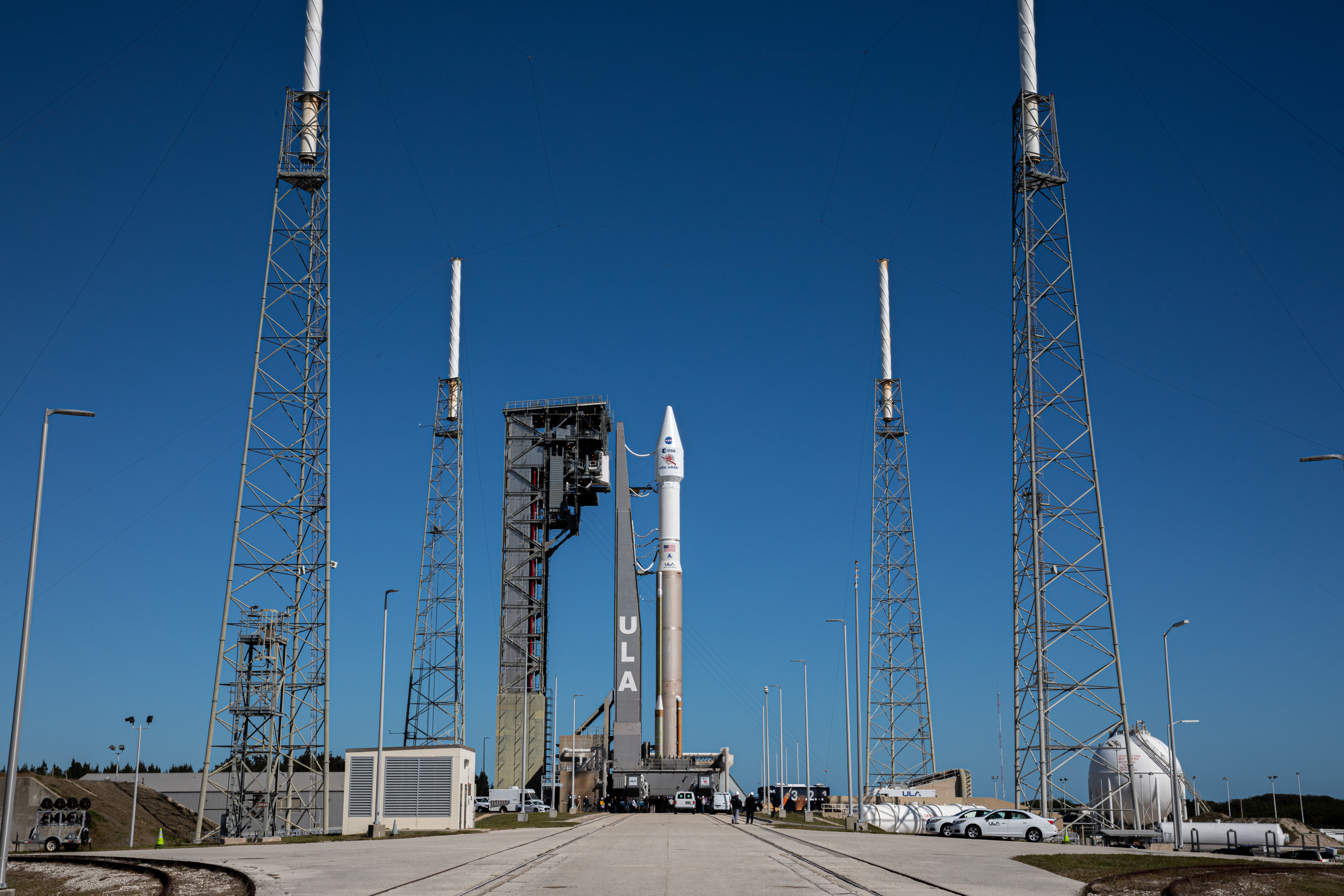Atlas V Rocket, Solar Orbiter Spacecraft Arrive at Launch Pad


The United Launch Alliance Atlas V rocket carrying the Solar Orbiter spacecraft has made its final move on Earth: the short journey from the Vertical Integration Facility to the launch pad at Space Launch Complex 41 at Cape Canaveral Air Force Station in Florida. Liftoff is targeted for 11:03 p.m. EST on Sunday, Feb. 9. There is a two-hour launch window.
The weather forecast for launch time calls for favorable conditions. Meteorologists with the U.S. Air Force 45th Space Wing continue to predict an 80% chance of weather cooperating for launch.
Live coverage of the countdown and liftoff will begin at 10:30 p.m. EST on Sunday, Feb. 9, on NASA TV, NASA TV online, and here on the launch blog.
Solar Orbiter is an international collaborative mission between the European Space Agency (ESA) and NASA. The spacecraft will observe the Sun with high spatial resolution telescopes and capture observations in the environment directly surrounding the spacecraft to create a one-of-a-kind picture of how the Sun can affect the space environment throughout the solar system. The spacecraft also will provide the first-ever images of the Sun’s poles and the never-before-observed magnetic environment there, which helps drive the Sun’s 11-year solar cycle and its periodic outpouring of solar storms.

























